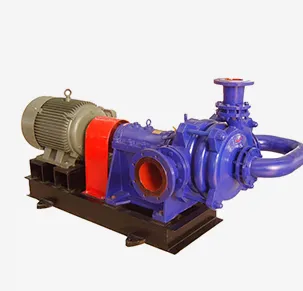English
- Afrikaans
- Albanian
- Amharic
- Arabic
- Armenian
- Azerbaijani
- Basque
- Belarusian
- Bengali
- Bosnian
- Bulgarian
- Catalan
- Cebuano
- Corsican
- Croatian
- Czech
- Danish
- Dutch
- English
- Esperanto
- Estonian
- Finnish
- French
- Frisian
- Galician
- Georgian
- German
- Greek
- Gujarati
- Haitian Creole
- hausa
- hawaiian
- Hebrew
- Hindi
- Miao
- Hungarian
- Icelandic
- igbo
- Indonesian
- irish
- Italian
- Japanese
- Javanese
- Kannada
- kazakh
- Khmer
- Rwandese
- Korean
- Kurdish
- Kyrgyz
- Lao
- Latin
- Latvian
- Lithuanian
- Luxembourgish
- Macedonian
- Malgashi
- Malay
- Malayalam
- Maltese
- Maori
- Marathi
- Mongolian
- Myanmar
- Nepali
- Norwegian
- Norwegian
- Occitan
- Pashto
- Persian
- Polish
- Portuguese
- Punjabi
- Romanian
- Russian
- Samoan
- Scottish Gaelic
- Serbian
- Sesotho
- Shona
- Sindhi
- Sinhala
- Slovak
- Slovenian
- Somali
- Spanish
- Sundanese
- Swahili
- Swedish
- Tagalog
- Tajik
- Tamil
- Tatar
- Telugu
- Thai
- Turkish
- Turkmen
- Ukrainian
- Urdu
- Uighur
- Uzbek
- Vietnamese
- Welsh
- Bantu
- Yiddish
- Yoruba
- Zulu
Telephone: +86 13120555503
Email: frank@cypump.com
Sep . 12, 2024 05:50 Back to list
High-Performance Centrifugal Slurry Pumps | Durable & Efficient Solutions
Understanding Centrifugal Slurry Pumps An Overview
Centrifugal slurry pumps are a critical component in various industrial applications, particularly in mining, mineral processing, and construction. These pumps are designed to handle abrasive and viscous slurries, which consist of solid particles suspended in a liquid. Their ability to efficiently transport these mixtures makes them invaluable in many processes, from material extraction to waste disposal.
How Centrifugal Slurry Pumps Work
The operation of a centrifugal slurry pump relies on the principles of centrifugal force. When the pump’s impeller spins, it imparts kinetic energy to the slurry, causing it to move outward from the center of the impeller to the discharge outlet. The conversion of kinetic energy into pressure energy allows the slurry to be moved over considerable distances and to withstand significant elevation changes. The design of the impeller and the pump casing is crucial, as it determines the pump's ability to efficiently handle the specific gravity and viscosity of the slurry.
Key Features and Components
Centrifugal slurry pumps typically consist of several key components the impeller, pump casing, shaft, and bearings. The impeller is usually designed with a robust structure to withstand the abrasive nature of the slurry. Materials such as high-chrome alloys or rubber linings are often used to enhance durability and resist wear.
The pump casing encloses the impeller and helps create the necessary pressure for the slurry to flow. It’s important for the casing to be designed with adequate clearance to accommodate the solids being pumped without clogging. Additionally, the bearings support the pump shaft and ensure smooth rotation, which is essential for maintaining the pump's efficiency.
centrifugal slurry pump

Applications
Centrifugal slurry pumps find use across a range of industries. In mining, they are employed to transport slurry containing minerals from extraction sites to processing plants. In the aggregates industry, these pumps move sand and gravel slurries, facilitating material handling operations. Furthermore, they are integral in wastewater treatment processes, where they help transport sludge and other byproducts for treatment and disposal.
Maintenance and Performance Considerations
To ensure optimal performance, regular maintenance of centrifugal slurry pumps is essential. This includes routine inspections for wear and tear, as well as monitoring for any signs of leaks or vibrations. Proper alignment and lubrication of bearings also play a crucial role in enhancing the lifespan of the pump. Operators should be aware of the characteristics of the slurry being pumped, as variations in viscosity or solid content can significantly impact pump performance.
Conclusion
Centrifugal slurry pumps are engineered to meet the demands of challenging pumping applications. Their robust design and efficiency make them a reliable choice for moving abrasive slurries in various industries. By understanding the operational principles, key components, and maintenance requirements, users can maximize the functionality and longevity of these vital pumping systems. As industries continue to evolve, the role of centrifugal slurry pumps will remain essential, ensuring the efficient movement of materials in multiple perspectives of modern engineering operations.
-
ISG Series Vertical Pipeline Pump - Chi Yuan Pumps Co., LTD.|High Efficiency, Energy Saving, Low Noise
NewsJul.30,2025
-
ISG Series Vertical Pipeline Pump- Chi Yuan Pumps|High Efficiency&Low Noise
NewsJul.30,2025
-
ISG Series Vertical Pipeline Pump-Chi Yuan Pumps Co., LTD.|High Efficiency&Energy Conservation
NewsJul.30,2025
-
ISG Series Vertical Pipeline Pump - Chi Yuan Pumps Co., LTD.|Advanced Hydraulic Design&Energy-Efficient Solutions
NewsJul.30,2025
-
ISG Series Vertical Pipeline Pump - Chi Yuan Pumps Co., LTD.
NewsJul.30,2025
-
ISG Series Vertical Pipeline Pump - Chi Yuan Pumps Co., LTD.|energy-efficient fluid handling&industrial durability
NewsJul.30,2025










